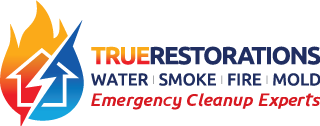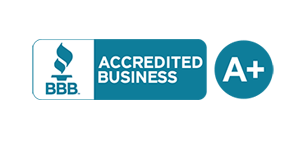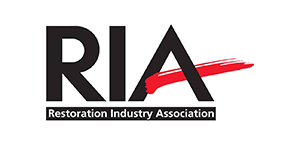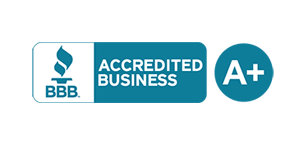General Liability Insurance (GL) vs. Flood Insurance Differences:
Not all water conditions are covered by either type of policy. Here are some general rules for understanding which type of policy might afford coverage for a water emergency at your property. In all cases, the source of the water is primarily used to determine which insurance would cover the loss as well as if it will even be a covered loss. In some cases you can have an event (storm / hurricane) where both policies would provide coverage. Rising waters from exterior flooding enter the structure as well as wind driven rain. Typically, flood will cover from the rising water mark left on the interior and all areas below that affected by the water would be potentially covered. All water infiltration above that rising water mark would potentially be covered by the GL policy.
| Source of Water | GL | Flood | Notes |
|---|---|---|---|
| Broken Pipe or Defective Appliance | Yes | No | |
| Wind driven rain into a structure | Yes | No | Typically covered by most carriers |
| Ground water infiltration from exterior source | No | Yes? | Depends on policy wording |
| Overflowing body of water | No | Yes | Depends on Flood Policy wording |
| Seepage of water through a foundation | No | No | Typically, not covered |
| Sewer Leaks (internal or from internal blockage) | Yes | No | Typically covered |
| Sewer Backup from full septic tank | Maybe | No | Some policies have coverage, w/limits |
| Sump pump failures | Maybe | No | Some policies have coverage, w/limits |
Types of Flood Policies
There are two types, a NFIP (National Flood Insurance Program, FEMA type) policy and SFIP (Standard Flood Insurance policy. What is the difference between NFIP and SFIP? The National Flood Insurance Program covers direct physical damage by flooding to your building and/or personal property, also known as contents. The Standard Flood Insurance Policy (SFIP) is a single-peril (flood) policy that pays only for flood damage to your insured property, up to the policy limit. You should learn which type of policy you have as there are different rules for each type.
Covered Claims
This is another area that is nuanced for each type of policy. You would need to describe the source of the water causing the flood to your insurance carrier to see if the loss will be covered. In most cases, the determination will be delayed pending a site inspection by a field adjuster. You can expect long delays in even getting a coverage determination due to the volume of claims that likely occurred at the same time as your event.
Another aspect that adds to the delay is when the field adjuster that is assigned to you claim is an independent adjuster (IA) who is a subcontractor assigned to just gather information for a desk adjuster who works directly for the carrier and makes the coverage determination. These IA’s are usually swamped with a multitude of claims, further slowing down the information flow.
Emergency Mitigation Service (EMS) Scope of Work Concerns for Covered Claims
GL claims provide coverage for all aspects of emergency mitigation services to Institute of Inspection Cleaning and Restoration Certification (IICRC) industry standards including, but not limited to the following:
- Content manipulation (man hours)
- Demolition of affected finishing affected by the water or need to be removed to access trapped moisture.
- Anti-microbial treatment to inhibit mold growth.
- De-humidification of the structure and elevated interior moisture with the use of industrial strength dehumidifiers, air movers, air filtration devices
- Personal Protective Equipment (PPE) for all workers
- Carting costs for debris
- Repair of all affected building finishes removed during mitigation.
- Replacement costs for damaged contents or cleaning costs for salvageable contents
EMS Decisions
Begin mitigation or await claims determination? This will be your decision, here are some things to consider.
- Your policy likely has wording that states you are to mitigate damages ASAP and not to wait as delays will expand the loss incurring more exposure to the carrier. The carrier can deny paying you for additional damages deemed avoidable if mitigation intervention WAS NOT started expeditiously.
- TR can execute full EMS services to IICRC standards right away collecting an agreed payout with out of pocket (OOP) payments from you and will provide you with a paid invoice that you can submit to your carrier for covered redemptions. Having a paid invoice will help you get paid quicker and also help you maximize your payout.
- TR can and will perform reduced services below the industry standard conditional upon a signed indemnification stating your preference to not hire us to provide complete services.
- TR can also wait for an adjuster to assess; get approvals for whatever services they will cover and then provide you with a supplemental cost, the cost not covered within your flood policy due to their limitations, which you can elect to pay OOP for complete service or agree to less coupled with an indemnification. Please understand that the approval process could take 2-3 weeks to complete before the EMS work starts.
Flood Policies will have coverage for only some of the above and don’t adhere to the IICRC standard. Depending on the policy type (NFIP or SFIP) the coverage will vary. Flood policies are not like GL policies in as much as they are there for help, not complete recovery of your home to pre-loss condition. Below is a list of typical FEMA limitations on coverage inclusions.
- Likely doesn’t include any contents coverage (unless your policy has a rider). This includes content manipulation or recovery costs. This may be work that you choose to do yourself to save money.
- Will pay for demolition and carting costs.
- Will only pay for about 50% of needed drying equipment & limits dry time to 3 days max (not enough to properly dry the structure down)
- Won’t pay for generator usage or temp power, air filtration, heaters, desiccant dehumidifiers (used in cold environment, also where little to no heat is available) or structural drying equipment (Injecti-dryers, floor drying mats, heated air movers, etc.)
- NFIP adjuster guidelines dictate that only direct physical damages caused by flood waters may be included in flood estimates. Adjusters are instructed by the NFIP only to include items “touched” by flood waters. This fact affects what adjusters can include in their estimates. NFIP will not allow its adjusters to match the upper cabinets, which were not damaged by the water, with the lower cabinets which were in flood water, which is typically covered in a normal GL claim.
- Based on your policy coverages, most finishes in basements are not covered (wallboard, paint, carpeting, etc.) for removal and not covered within repairs either
Please visit this site for a little bit further of an explanation: https://www.randrmagonline.com/articles/86896-flood-losses-top-10-things-restorers-must-know-when-handling-fema-claims

























